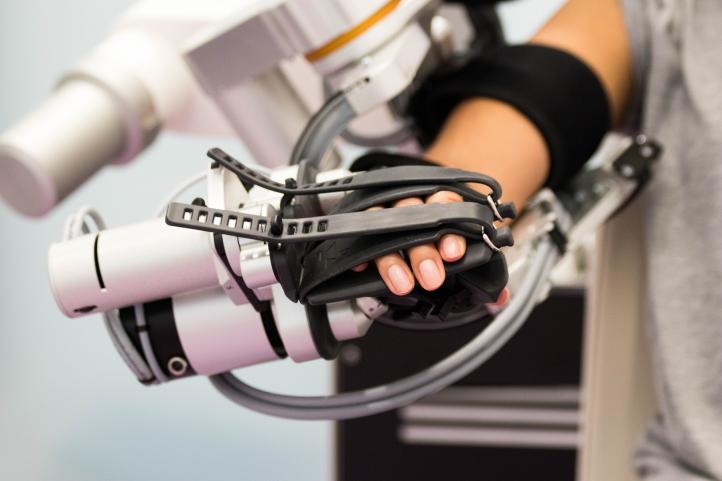The use of technology in neurorehabilitation

Over the past 25 years, it has been found that the efficacy of conventional physical and / or occupational therapy applied during neurorehabilitation in patients with a stroke or spinal cord injury can hardly be demonstrated in the context of evidence-based medicine. Conventional or occupational physiotherapy, in general, has been carried out in limited populations, with few objective evaluations and, for the most part, without a solid and transversal scientific base.
However, in neurorehabilitation, optimal approaches, such as the use of complete randomized controlled trials, are difficult to implement rigorously, due to the confusing effects of spontaneous recovery of function. Furthermore, comparisons with "controls", that is, patients who do not receive any treatment, cannot be performed. Therefore, the quantitative effects of conventional physical and occupational therapies remain questionable. Some researchers have even argued that perhaps conventional therapy does not provide a real benefit in reducing impairment beyond that offered by spontaneous biological recovery alone, except in teaching compensatory strategies to patients through motor learning.
However, from the late 1980s to the early 1990s, various developments in basic and clinical research led to profound changes in the interventions of technology applied to neurorehabilitation. Research in animal models showed the ability of rehabilitation to alter both neural connectivity and movement function after injury. These findings could also be used to restore locomotion in the injured human. Recent studies using neurostimulation of the spinal cord at the epidural level in animals and humans show that such stimulation can also increase the responsiveness of neural networks in the spinal cord, which could further increase the possible results with the gait training. For the upper limb, experiments performed on monkeys who had suffered a focal ischemic stroke showed that rehabilitative training of hand function prevented loss of cortical representation of the hand and was accompanied by functional gains.
In a 2013 study, led by Dr. Ramos-Murguialday, it was concluded that the inclusion of brain-computer interface technologies in intensive upper limb training in people who had suffered a stroke, it induced functional changes beyond conventional rehabilitation with robotic orthoses. Today there are already many examples of robotic lower and upper limb orthoses, some even portable, such as exoskeletons, for both gait and upper limb.
In addition to robot therapy, in the last thirty years and with the advent of the information and communication technologies, another range of technologies have emerged that have been incorporated as possible complementary tools to conventional therapy or even robotic therapies. New signal analysis and processing strategies, smaller and faster processors, new advances in image quality and new inertial sensors have made it possible to interact in a way not known, until now, with the central nervous system, in addition to knowing in more detail the pathophysiological mechanisms underlying spinal cord injuries and brain damage.
In some cases, systematic reviews of clinical studies of these technologies endorse their effectiveness as supplements to conventional therapy. These can help to benefit from the mechanisms of neuronal plasticity after central nervous system damage. However, many unanswered questions remain, because there is much heterogeneity in individual responses to certain therapeutic interventions aimed at restoring lost function. This text precedes a set of articles that will include part of what was debated in the past XXXI Institut Guttmann Technical Symposia entitled "Neurotechnology and Rehabilitation". We will discuss in them the capacity of electromechanical or robotic elements as enhancers of rehabilitation and the need to find both the best candidates and the best rehabilitation programs and intensities to obtain the greatest benefits in people who need neurorehabilitation. The commitment to the combination of neurorehabilitation and technology is clear; that's why next September, the Neurorehabilitation University Institute of the Institut Guttmann attached to the UAB, together with the UPC Barcelona Technical School of Engineering, will expand its teaching offer with a new Official University Master in Neuroengineering and Rehabilitation.
Additionally, it delves into the idea of how portability and specificity in exoskeletons for gait rehabilitation brings an advantage and can be an innovative idea from where a startup like ABLE Human Motion arises. We will also talk about virtual reality as a useful tool, current and capable of evaluating and intervening in virtual scenarios that can be used for motor rehabilitation. We will also present the paradox that introduces technology into our lives and, in turn, the intention that it be used in a demographic society with more older people. Finally, we will see how the Seniorlab project manages to connect this distance through a community of innovative seniors that works with new technologies.